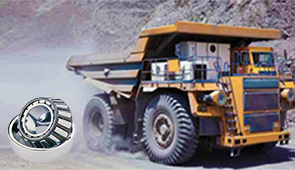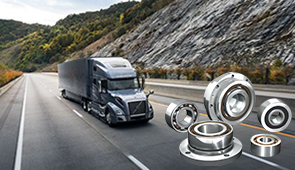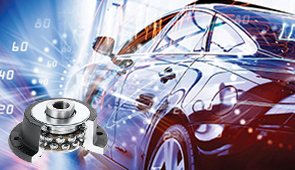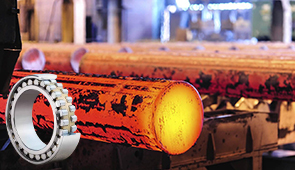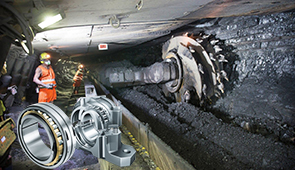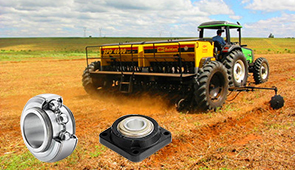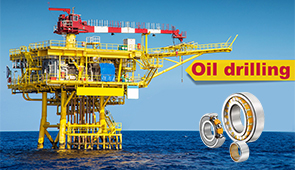Ultimate Ball Bearing Grade Chart: From Precision to Grade 25
Ball bearings play a crucial role in the functionality and efficiency of countless mechanical systems, providing support for rotational motion with minimal friction and maximizing performance. The quality and accuracy of a ball bearing are determined by its grade—a metric that defines its level of precision, roundness, and surface finish. This article explores the various grades of ball bearings, shedding light on their specific classifications, tolerances, and applications. From ultra-precise bearings used in aerospace and medical equipment to Grade 25 bearings commonly found in industrial and commercial machinery, understanding these distinctions enables engineers and manufacturers to select the most appropriate solution for a given operational requirement. This chart serves as a definitive guide to understanding ball bearing grades, helping readers make informed decisions based on their technical and mechanical demands.
What are ball bearing grades, and why are they important?
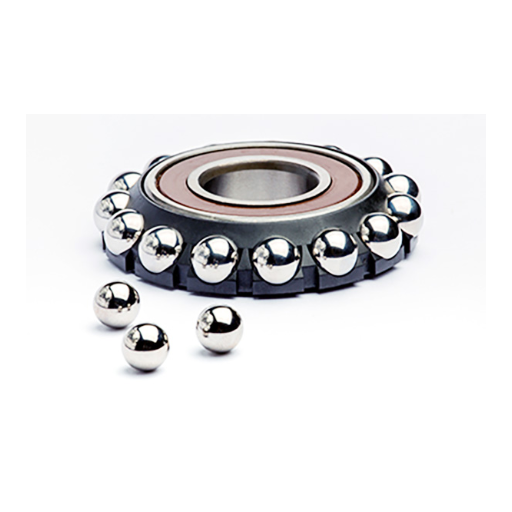
Understanding ball bearing precision levels
Ball bearing grades are a set classification system that divides bearings in groups by their accuracy, tolerances, and overall operational efficiency. These classify types of bearings are critical because they are directly responsible for how a bearing performs under distinctive situations, which directly dictates the effectiveness and durability of the machinery. Bearings, for instance, manufactured to Grade 5 or Grade 10 levels, are tighter-toleranced and constructed for use in precision applications where minimal friction between parts is required. Lower grades, such as Grade 100 or Grade 200, are usually utilized in less challenging conditions.
- Sphericity (Deviation from Perfect Sphere): For higher-grade bearings the deviation is small and within tolerable limits. For instance, Grade 5 allows maximum sphericity variation of 0.127 microns while Grade 100 permits up to 2.54 micron deviation.
- Diameter Tolerance: Ball diameter tolerance gets stricter with an increase in grades. A veteran Grade 10 ball has a diameter tolerance of ±0.25 microns. A regular Grade 200 ball has ±5 microns.
- Surface Finish: Increased grade bearings have finer, more polished surfaces which result in decreased friction and wear. Grade 5 balls may have a surface roughness measurement of 0.01 microns while lower grades easily surpass 0.1 microns.
This selection criterion underscores how critical it is to choose an appropriate ball bearing grade concerning targeted performance parameters, which guarantees effectiveness and accuracy.
How grades affect bearing performance
During the performance evaluation of the bearings in question, grades have a direct impact on key factors such as the accuracy of dimensions, surface finish, and overall operational effectiveness. Higher grades, such as Grade 5 or Grade 10 bearings, offer higher tolerances of dimension and provide smoother finishes relative to lower grades, such as Grade 100 or Grade 200 bearings.
- Dimensional Tolerance: While Grade 200 balls offer a tolerance of ±5 microns, Grade 5 bearings offer a much higher tolerance of ±0.5 microns. This higher tolerance increases motion as well as reduces vibration when the bearing is in operation.
- Surface Roughness: A Grade 5 ball has surface roughness of about 0.01 microns unlike lower grade balls which have surface roughness which can be as bad as 0.1 microns. This means that friction is reduced and the life of the bearing is longer.
In my opinion, the grade that is selected should match the mechanical loads, rotating speeds, and the environment that the bearing will be functioning in. This ensures maximum functionality as well as dependability. Correct grade selection means lesser wear-and-tear, increased efficiency, and lesser maintenance expenditure.
How to read and interpret a ball-bearing grade chart?
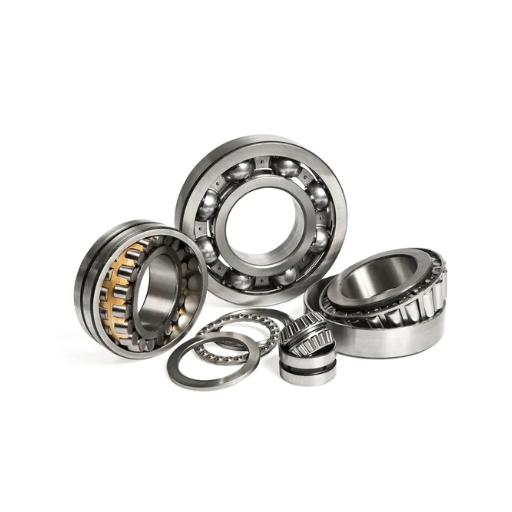
Decoding grade numbers and their meanings
Understanding how the bearing grade numbers correspond to performance features requires careful consideration of the tolerances and attributes. These grades are usually set by international bodies like ISO or ABEC, who also define how roundness, surface finish, ball size and geometric accuracy need to be measured. High grade bearings (ABEC 5 or 7) are made to closer tolerances for high speed and accuracy applications. Low grade bearings (ABEC 1 or 3) are manufactured to wider tolerances and are sufficient for general-purpose applications.
- Roundness: Higher class bearing grades have roundness deviations generally closer to the minimum, ensuring smooth rotation.
- Surface Finish: High-precision grade bearings tend to feature low-friction surfaces to aid in high-performance functions.
- Ball Size Variation: Smaller ball size variation leads to lower vibrations, creating better operational stability.
- Geometric Accuracy: Close tolerances of geometry enable the reduction of misalignment during rotation.
Selecting the right grade depends on these factors and their alignment with the mechanical requirements and environmental factors of the application.
Tolerance ranges for different grades
Different grades’ tolerance ranges are based on the application’s objectives and corresponding operational requirements. For example,
- ABEC 1 (Grade 1): These bearings are associated with the widest tolerances and are suited for general-purpose machinery working with low-precision applications. The bearings’ and their subtending components’ dimensional and roundness deviations are large.
- ABEC 3 (Grade 3): This grade exhibits moderate tolerances when compared to Grade 1. It is suitable for application with decent precision requirements, for example, electrical motors or conveyor belts. Dimensional deviations are controlled to enhance the stability of rotation.
- ABEC 5 (Grade 5): This grade has the broadest range of roundness and geometric tolerance with high-speed precision instruments or automotive components. They provide high performance and enhanced features, making them ideal for high-speed applications.
- ABEC 7 and 9 (Grades 7 and 9): These grades have the narrowest range of tolerances meant for highly sensitive applications such as aerospace or medical devices. These applications require a high degree of accuracy so deviations in geometry and size are minimal.
These categorizations are supported by compliance with the criteria of the Annular Bearing Engineers’ Committee (ABEC) among others. Every classification affects efficiency, life cycle, and the functioning of the machine as a whole. The right selection guarantees that functional and environmental requirements of the application are met.
Comparing grades across manufacturers
The comparison of bearing grades from different manufacturers requires considering some fundamental technical requirements that determine suitability and compatibility. These include tolerances, material types, load-bearing capacity, and surface roughness, and their combination defines the possible uses of the bearings.
- Tolerance Levels: Different manufacturers interpret and apply ABEC standards differently which results in some deviations in the achieved tolerances. One of the examples here is that ABEC-5 bearings from a selected manufacturer may have dimensions which are more stringent than others, especially when it comes to radial runout and bore diameter.
- Material Composition: The majority of high-performance bearings are manufactured from either chrome steel (say AISI 52100) or stainless steel. However, they undergo different treatments like heat or coating that changes their hardness, corrosion resistance, and lifespan.
- Load Capacity: C(dynamic load ratings) and Co(static load ratings) also change due to design and material property optimizations. For example, a bearing with high dynamic loading capacity tends to have higher fatigue life, which is important in high speed and heavy loaded applications.
- Surface Finish and Geometry: The Internal geometry of a bearing surface, like raceway curvature and finish surface roughness (measured in microinches Ra), greatly determines friction and noise. The vibration and noise generated by bearings tend to be lower for those with higher surface finish grades.
It is recommended to obtain detailed engineering specifications, including datasheets and test reports, directly from each manufacturer. Cross-referencing these data points ensures that the selected grade meets the functional and environmental requirements of the target application, preventing operational inefficiencies or premature failures.
What are the most common ball-bearing grades used in the industry?
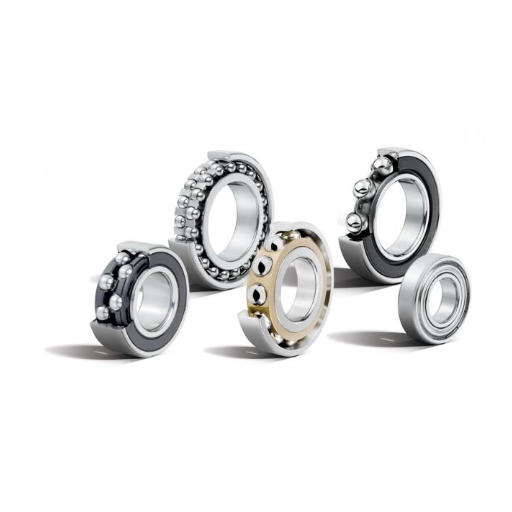
Grade 25 and its applications
Grade 25 ball bearings are widely applied in industrialized processes due to their accuracy, tolerances, and reliable performance across numerous applications. Grade 25 is part of the ABMA (American Bearing Manufacturers Association) grading classification system, which guarantees at least 25 millionths of an inch (0.000025 in) of sphericity deviation. This remarkable accuracy is ideal for high-speed assemblies, precision instruments, and for engines and machines that operate under low vibration and high efficiency conditions.
- Sphericity Tolerance: Uniform in all regards within a value of ±0.000025 inches, which accounts for friction minimization.
- Surface Roughness: Almost mirrors smoothness, which serves to increase motion and decrease material fatigue.
- Material Hardness: Using high-carbon chromium steel, the Rockwell Hardness (HRC) measure ranges from 60-66 which allows caps of durability to be shattered under load.
- Diameter Variation: ±0.00005 inches is the maximum allowance, which secures uniformity among the bearings.
Such specifications give reasons why these bearings are commonly used in automotive parts such as turbines and gearboxes, as well as precision medical equipment, where failure and imprecision is not an option.
Precision grades for high-performance bearings
The categorization of high-performance bearings is done based on the ISO and ABEC standards, which specify tolerances for accuracy dimensions, rotational precision, and surface finishing, due to which the bearing is classified into grades. Typically, ISO classification ranges between Grade 0 (with the least precision) to Grade 5 (with the most precision), while ABEC classifies from ABEC 1 to ABEC 9, wherein higher integers are indicative of increased rigidity of tolerances.
- Runout Tolerances: Better than 0.0010 inches guarantee that there is absolutely no axial or radial movement during rotation.
- Roundness Tolerances: Guided to be within 0.000025 inches to support motion smoothness.
- Surface Roughness: Generally achieve a Ra measure of ≤0.03 μm on contacting surfaces to reduce friction.
The development of machine tools for automobile precision parts, servo systems for aerospace applications, and robotic technologies require these specific precision grades since small misrichtenings are not allowed.
Standard grades for general use
Standard grades designed for common use attempt to strike a balance between economic expenditure and functional efficiency. They are usually implemented in systems where precision matters, such as in aerospace and high-end robotics, but to a lesser degree than in other fields. In most cases, the tolerances and traced parameters that follow are usually acceptable:
- Dimensional Tolerances: Allowable range of self-limiting greater than or equal to ±0.001, appropriate to general mechanical assemblies and not critical rotations.
- Roundness Tolerances: Cost-effective maintenance of ≤0.0001 to provide enough operational strength.
- Surface Roughness: Generally reaching ≤0.4 μm in the roughness average for softer operating environments and still easy to manufacture.
- Material Specifications: Reasonable engineering materials such as low carbon steel or aluminum alloys are commonly used because they have sufficient strength for general usage.
These factors represent an industry-accepted baseline for performance across various sectors, ensuring components meet practical requirements without incurring unnecessary manufacturing complexities or expenses.
How do ball sizes and materials affect grading?
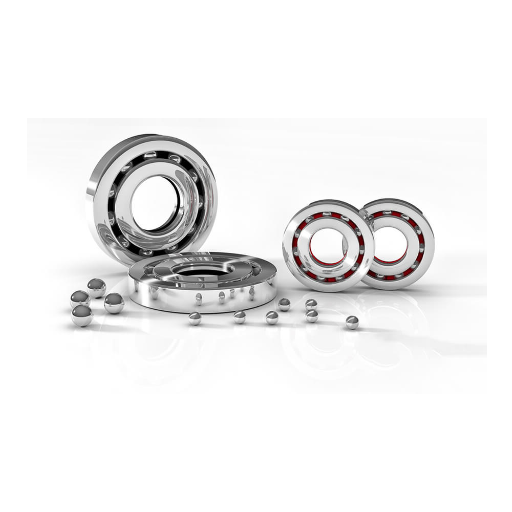
Impact of ball diameter on grade selection
The Balls’ diameter impacts the system’s appeal grade selection because it influenced load distribution, motion, and overall productivity. Greater ball diameters tend to have higher load support capacities owing to greater contact area between the ball and race, thus lowering localized stress. Smaller ball diameters enhance smoothness and accuracy of motion and are better suited for precision applications where there is a need for stringent tolerances and low vibrations.
- Ball Diameter Tolerance: Grade 3 or better ±0.00003 inches is the dimensional tolerance that must be observed in order to achieve uniformity for the purpose of reducing rotational error.
- Load capacity relation: Higher static and dynamic loads are sustainable due to greater surface contact within larger diameters.
- Sphericity error: For high-precision work, sphericity deviation should not be greater than 0.000005 inches, as this would compromise the performance target.
- Rigidity and alignment: Reduced tolerances on load increase are allowable through the use of increased alignment capability with smaller diameter balls.
Meeting the requirements for magnitudes of load, precision, and operating conditions together with specific application constraints dictates the selection of the ball diameter.
Chrome steel vs. ceramic bearing balls
To simplify the comparison of chrome steel and ceramic bearing balls, consider the following:
- Material Properties: Chrome steel balls possess high hardness (60-67 HRC as standard) and have excellent wear resistance, making them ideal for durable applications under heavy loads. Ceramic balls made from silicon nitride (Si3N4) possess superior hardness (up to 78 HRC) and considerably higher stiffness, which reduces deformation under loads.
- Weight and Rotational Efficiency: Chrome steel balls yield higher centrifugal forces at high speeds, which results in wear on raceways. Rotational efficiency is higher with ceramic materials because these are approximately 40% lighter than chrome steel. This decrease in weight, especially at higher speeds, increases rotational efficiency and decreases centrifugal force.
- Thermal Performance: Ceramics can be relied upon in high-temperature and thermally variable conditions because they are effective with low thermal expansion coefficients and resistance. Operating ranges of -40°F to 392°F are best suited for chrome steel, so Ceramics are much more flawless when it comes to standard operating ranges.
- Corrosion and Chemical Resistance: The non-metallic composition of ceramic balls enables superior corrosion resistance, making them suitable for chemical exposure as well as moisture-prone conditions. When comparing chrome steel, there is generally less resistance to moisture and chemicals.
- Cost Consideration: Chrome steel is preferred for high volume general-purpose bearings due to its low cost, whereas the ceramic balls command much greater prices owing to their intricate processing and unique material characteristics.
While both materials are options, the final choice should correlate with the application’s speed, load, temperature, and cost constraints. As an example, in high speed precision machines, ceramics are favorable, but in heavy duty industrial applications, the chrome steel’s lower price coupled with its high load bearing capacity makes it the more sensible choice.
Sphericity and surface roughness considerations
Upon considering the bearing ball sphericity and surface roughness, the main parameters relate to dimensional and surface accuracy, which at the same time significantly determine functionality. The measurement of sphericity, which is the distance of the ball from an ideal sphere, is done in microns. In applications with high precision requirements, ceramic balls exhibit exceptional sphericity. The deviation for these balls is close to ±0.2 µm, while chrome steel balls range around ±0.5 μm depending on the grade.
Wear and operational efficiency are impacted by surface roughness as well, which is measured in Ra (roughness average). Ceramic balls have surface roughness values below 0.01 μm, which results in less friction and is more optimal for interfaces. On the other hand, chrome steel balls have surface roughness values between 0.02 and 0.05 μm. This range might be suitable for common applications but will certainly increase frictional losses in a high-speed environment.
With these factors in mind, for applications with extreme accuracy and low wear such as aerospace and micro-mechanical systems, I would opt for ceramic balls. For softer applications, the more affordable chrome steel will also suffice.
What are the differences between deep groove ball bearing grades?
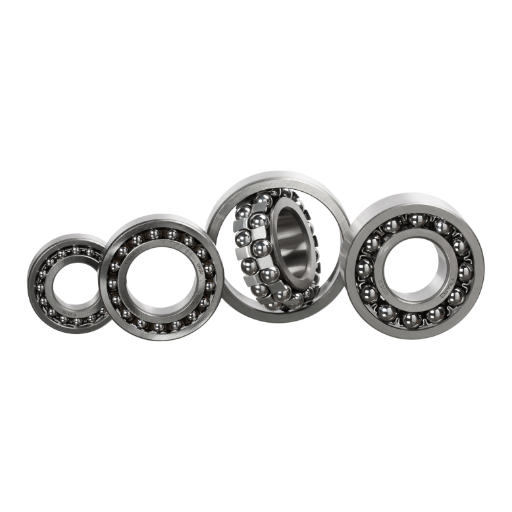
Tolerance specifications for deep groove bearings
The deep groove ball bearings’ tolerance is provided in international standards such as ISO 492 or ABEC (Annular Bearing Engineers’ Committee) classifications. These standards have subdivided bearings into different classes of precision, Normal P0 to P2 being the highest precision under ISO and ABEC 1 to 9 in the ABEC system.
For many standard applications, P0/ABEC 1 is often enough since it gives tolerances of about ±10μm for bore and outer diameter deviations and ±15μm for radial runout. For high-speed or high precision applications like aviation or medical equipment, P4 or ABEC 7 are often used as they have tighter tolerances of approximately ±2-5 μm for bore/outer diameter and ±2.5 μm for radial runout which helps achieve greater rotational accuracy, low vibrations and noise during operating conditions.
In selecting a grade, I look at the operational specifications such as speed, load and environmental conditions, that would provide the best tradeoff in performance and cost efficiency. For instance, P4 would be better for machine tools while P0 is adequate for simple rotating machines. These considerations are important with regards to the efficiency and durability of the bearing system.
Grade variations in single-row vs. double-row bearings
The grade classifications of single-row versus double-row bearings differ most significantly in design, capacity, and tolerance of application, in a given order. Single-row bearings can support radial loads and moderate one-way axial loads, whereas double-row bearings allow for greater rigidity in addition to higher radial and bi-directional axial loads. Their precision grades reflect these performance distinctions.
For single-row bearings, depending on operational requirements, common precision grades are P0 (ABEC 1) through P4 (ABEC 7). At P0, tolerances for bore and outer diameter deviations stand at around ±10 μm with radial runout of roughly ±15 μm. Tolerances for higher grades like P4 are tighter, at ±2-5 μm bore/outer diameter deviations and ±2.5 μm radial runout. High-grade single-row bearings are ideal for high-speed machinery or vibration-sensitive applications due to lower noise emissions.
Double-row bearings are advantageous because their design enables superior load division and deformation reduction under stress. Therefore, tolerances of double-row bearings are also gradeable alongside their advantageous functionality. P0 grade is adequate in standard cases, while machine tools and spindles are better served with P4/P5 grades due to the greater necessity for axial/radial precision. Smoother operational rotation, less vibration, and greater lifespan under high-performance conditions are achieved through tighter P4 grade clearances.
In any case, when selecting a grade of either bearing, consider the type of load (axial or radial), speed of rotation, working conditions, and operational lifespan. These factors are essential in dictating cost-performance ratio and effectiveness of the bearing system and are intertwined with basic economic factors.
Frequently Asked Questions (FAQs)
Q: What are precision ball bearings, and how are they graded?
A: Precision ball bearings are high-quality bearings designed for applications requiring extreme accuracy. They are graded based on their dimensional and geometric accuracy, with grades ranging from the highest precision (Grade 3) to lower precision (Grade 25). The grading system helps engineers choose the right bearing for specific applications, considering factors like sphericity, lot diameter variation, and nominal ball diameter.
Q: How are ball grades typically written, and what do they mean?
A: Ball grades are written as numbers, usually ranging from 3 to 25. For example, Grade 3 represents the highest precision, while Grade 25 is considered standard precision. A lower grade number indicates higher precision. In some cases, grades are written with two digits, so Grade 100 would be equivalent to Grade 10. These grades help manufacturers and engineers specify the level of precision required for a particular application.
Q: What are the common materials used in ball bearings?
A: The most common material for bearing balls is hardened steel, which offers excellent durability and performance. However, other materials are also used depending on specific requirements. These include stainless steel for corrosion resistance, ceramic materials like silicon nitride for high-speed applications, and tungsten carbide for extreme wear resistance. The choice of material depends on factors such as load, speed, and operating environment.
Q: How does the manufacturing process affect ball bearing precision?
A: The manufacturing process significantly impacts ball bearing precision. Bearing balls are manufactured through a series of steps that include forming, heat treatment, and grinding. Precision balls undergo additional processes like lapping and polishing to achieve higher grades. The process often involves running the balls between hardened steel plates, which improves sphericity and strengthens the balls. This careful manufacturing ensures each ball meets the required specifications for its grade.
Q: What is the significance of lot diameter variation in ball bearings?
A: Lot diameter variation refers to the difference between the largest and smallest ball diameters within a single lot of balls. This is a crucial factor in determining the grade of ball bearings. A smaller lot diameter variation indicates higher precision and consistency among the balls, which is essential for smooth operation and reduced vibration in high-precision applications. Lower grades allow for greater variation, while higher precision grades have stricter tolerances.
Q: How do ball bearing grades affect performance in different applications?
A: Ball bearing grades directly impact performance in various applications. Higher precision grades (lower numbers) offer better accuracy, smoother operation, and reduced vibration, making them ideal for high-speed machinery, precision instruments, and aerospace applications. Lower precision grades are suitable for general-purpose applications where extreme accuracy is not critical. The choice of grade affects factors such as rotational accuracy, torque consistency, and overall bearing life.
Q: How do ceramic ball bearings compare to steel ball bearings in terms of precision and performance?
A: Ceramic ball bearings, often made from materials like silicon nitride, offer several advantages over traditional steel bearings. They can achieve higher precision grades due to their material properties, which allow for better sphericity and surface finish. Ceramic bearings also provide better performance in high-speed applications, have lower density (reducing centrifugal forces), and offer improved corrosion resistance. However, they are typically more expensive than steel bearings and may have different load-bearing capabilities.
UCTH213-40J-300 with Setscrew(inch)
CNSORDERNO: Normal-duty(2)
TOGN: UCTH213-40J-300
SDI: B-R1/8
SD: 2 1/2
UCTH212-39J-300 with Setscrew(inch)
CNSORDERNO: Normal-duty(2)
TOGN: UCTH212-39J-300
SDI: B-R1/8
SD: 2 7/16
UCTH212-38J-300 with Setscrew(inch)
CNSORDERNO: Normal-duty(2)
TOGN: UCTH212-38J-300
SDI: B-R1/8
SD: 2 3/8
UCTH212-36J-300 with Setscrew(inch)
CNSORDERNO: Normal-duty(2)
TOGN: UCTH212-36J-300
SDI: B-R1/8
SD: 2 1/4
UCTH211-35J-300 with Setscrew(inch)
CNSORDERNO: Normal-duty(2)
TOGN: UCTH211-35J-300
SDI: B-R1/8
SD: 2 3/16
UCTH211-34J-300 with Setscrew(inch)
CNSORDERNO: Normal-duty(2)
TOGN: UCTH211-34J-300
SDI: B-R1/8
SD: 2 1/8









